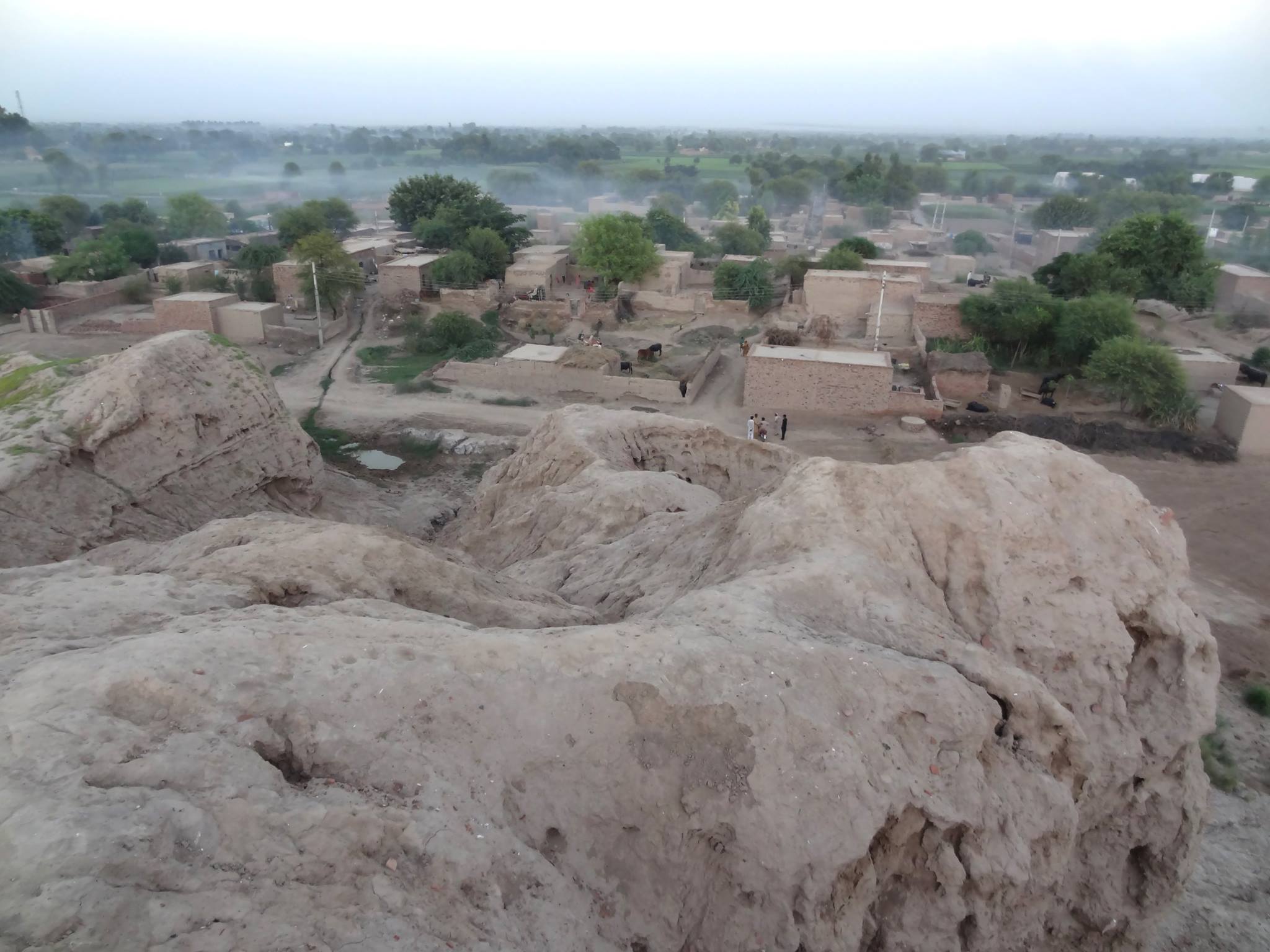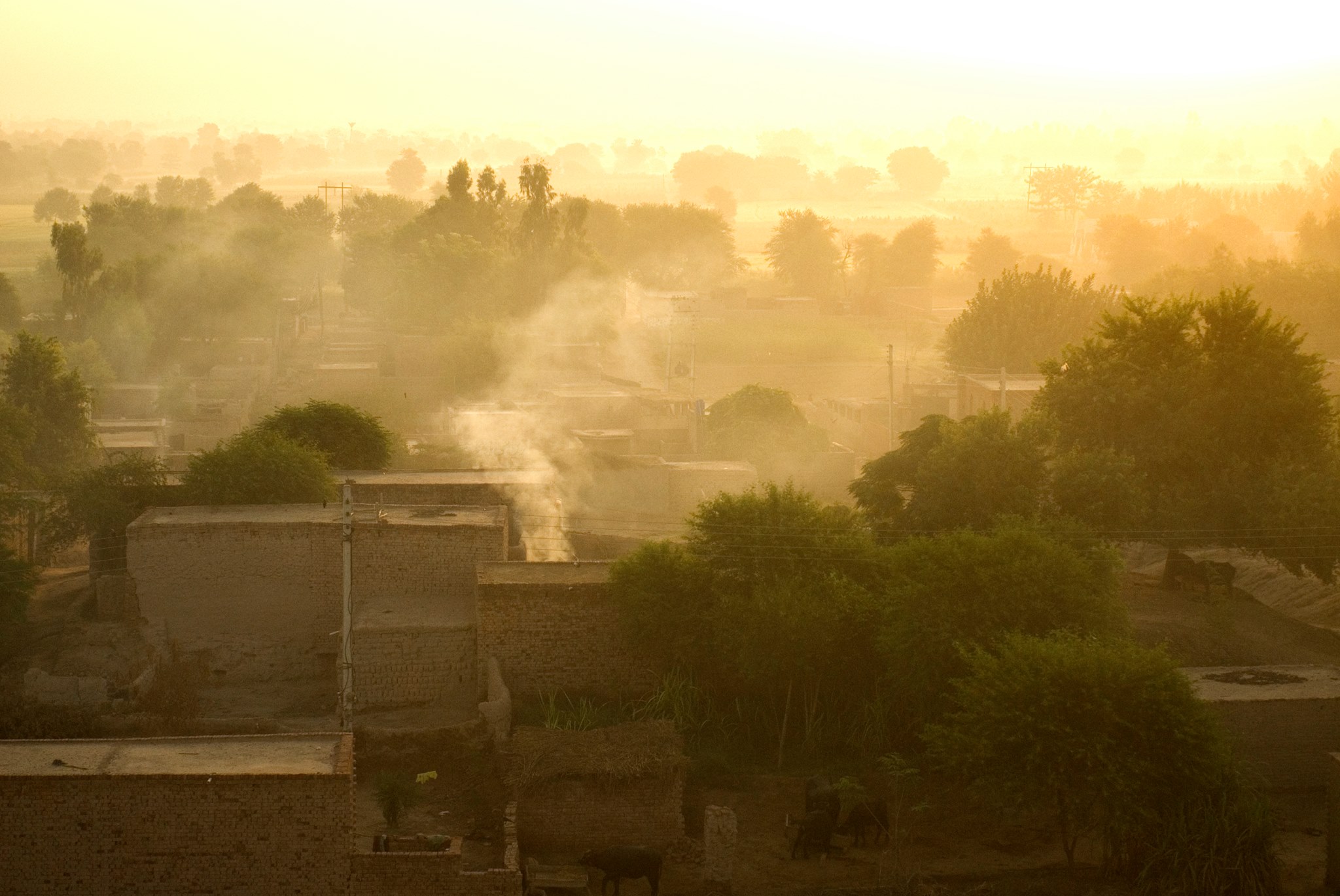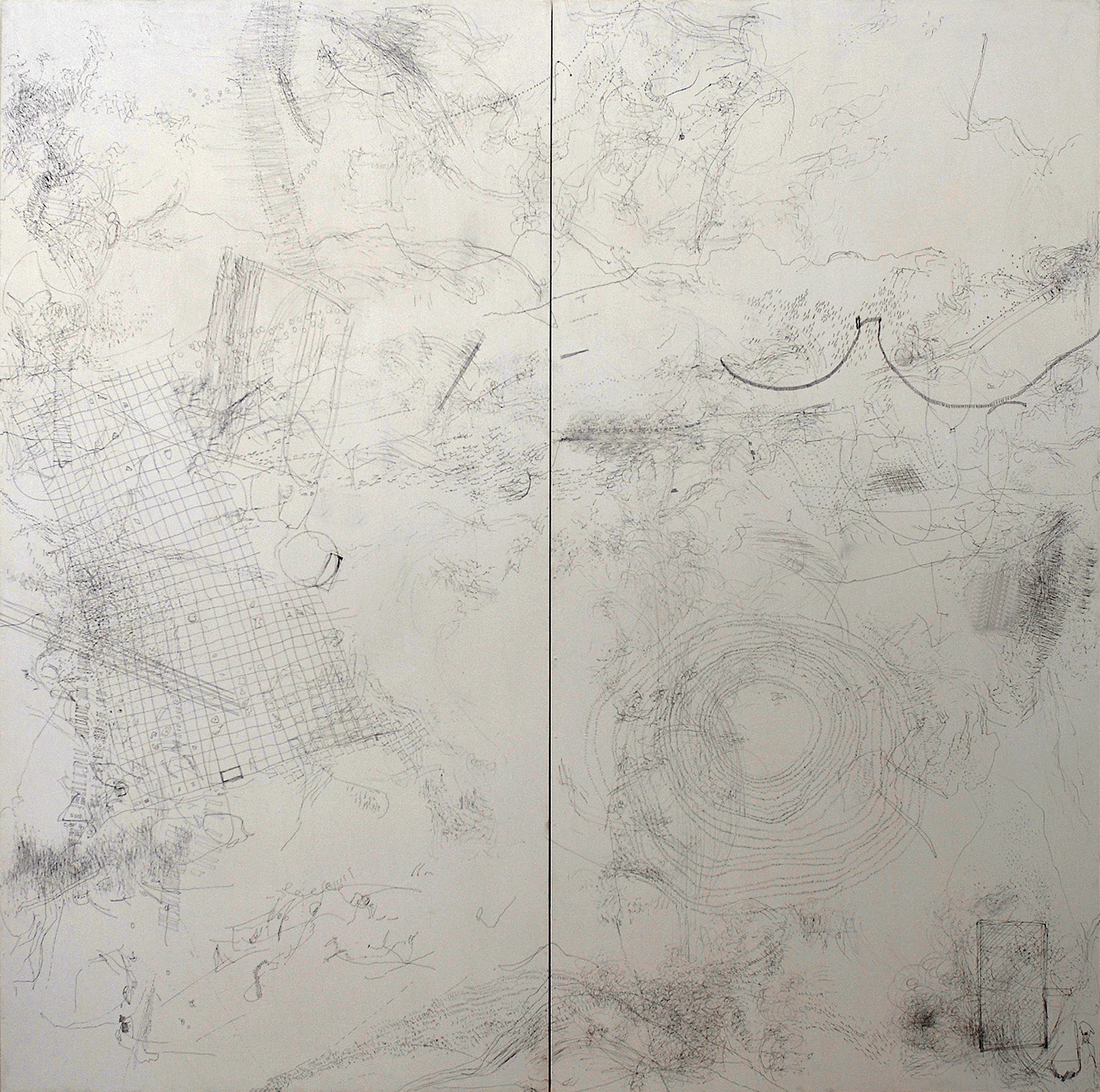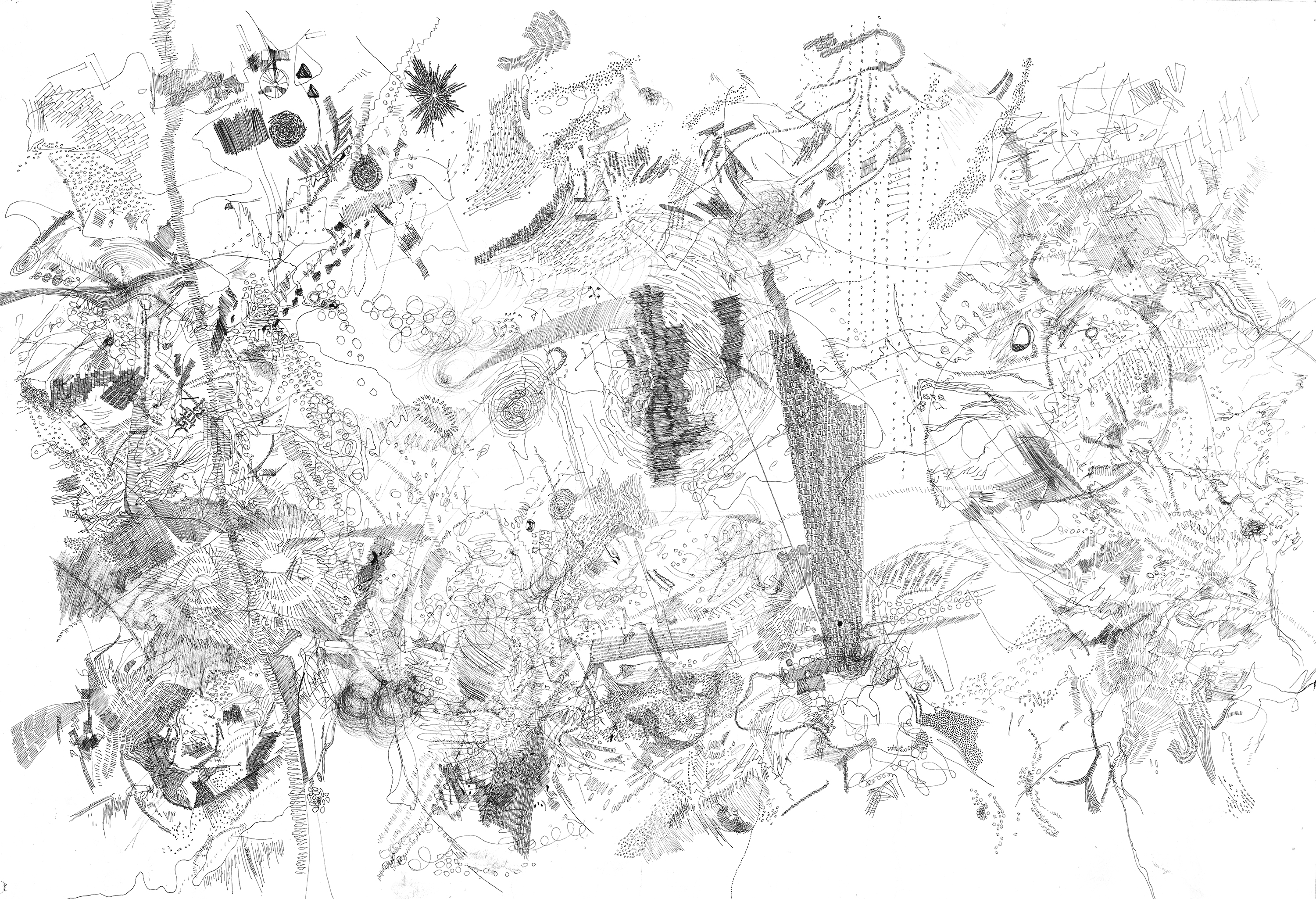‘My Perch, My Hometown’ | Tulamba, Pakistan
Pakistani artist Farrukh Adnan goes into depth in a geographical, historical, and personal exploration of his hometown, Tulamba, recreating its richness and mysteries in the huge installation ‘My Perch, My Hometown’, which was part of his Master’s thesis at the Beaconhouse National University in Lahore.
My work is about a genealogical as well as personal examination of the city of Tulamba, where I was born, located in Southern Punjab, Pakistan. This examination engaged me in reflections related to how we interpret a space within its context, and how a context itself builds, sometimes out of the “syntax” of the place. It also discusses how structures’  functions can be differently interpreted, thus stressing the importance of alternative meanings. The main aim is to present the idea of walking as a form of creation, as exemplified in the literary character of the “flâneur”, or as an illusionary space which defies the real space, therefore paving the way for new and sometimes opposite interpretations of the same space.
functions can be differently interpreted, thus stressing the importance of alternative meanings. The main aim is to present the idea of walking as a form of creation, as exemplified in the literary character of the “flâneur”, or as an illusionary space which defies the real space, therefore paving the way for new and sometimes opposite interpretations of the same space.
My interest in wandering pushes me to explore and investigate socio-political and cultural aspects of spaces (in this case Tulamba) through my art practice. I am engaging with or holding the space with my practice, trying to find connections with it through my own experience. They are in relation to “space”, “historical significance”, “current global values”, as well as connections with other worlds. I also try to figure out the “sense of self” and the “sense of space”, both aesthetically and through their connections between time and space.
The aim of my art practice, including my research, remains psycho-geographical, while spiritual elements have shifted from memory to symbols. Intricacy, repetitiveness and various kinds of lines, symbols, patterns, surveys and excavation plans are executed layer by layer, so as to recognize the historical significance of the particular place of Tulamba.
The Place
E tymologically the name “Tulamba” is derived from the name of Raja “Talman”. It is a historic town located in Southern Punjab, Pakistan. It is situated 60 miles from the historical city of Multan. Before the partition of the Indian subcontinent this town was known as the City of Brahmin’s. Its history goes back to the 2nd century B.C.E. and the town was known to be full of bustling artistic activity.
tymologically the name “Tulamba” is derived from the name of Raja “Talman”. It is a historic town located in Southern Punjab, Pakistan. It is situated 60 miles from the historical city of Multan. Before the partition of the Indian subcontinent this town was known as the City of Brahmin’s. Its history goes back to the 2nd century B.C.E. and the town was known to be full of bustling artistic activity.
Historical (genealogical) examination is one of the most important and essential element in carving identities or sense of self. I noticed that my interest in “Tulamba” inspired my art practice, not simply because of personal association, but also because Tulamba is a great historical and archeological site.
 As I grew older, I developed a strong curiosity towards this site. I began to ask why this space appears to be in such a wretched condition. Was it destroyed, plundered, built and re-built again? Although I don’t remember when I first consciously visited this place with these kinds of queries, I do remember that there occurred a time when I began to ask myself what kind of people must have lived here before. And what sort of abodes existed here? What was Tulamba in its earlier times?
As I grew older, I developed a strong curiosity towards this site. I began to ask why this space appears to be in such a wretched condition. Was it destroyed, plundered, built and re-built again? Although I don’t remember when I first consciously visited this place with these kinds of queries, I do remember that there occurred a time when I began to ask myself what kind of people must have lived here before. And what sort of abodes existed here? What was Tulamba in its earlier times?
I tried to find the connections to that time which I can’t see or experience through my own eyes, thus history is the only source. I want to figure out the events that took place here, and highlight related stories and myths about it. Following this method, walking becomes a type of reading, even when both the walking and the reading are imaginary, and the landscape of the memory appears as a text as that to be found in the labyrinth, the garden, or the stations.
Memory and Experience of Tulamba in the installation 'My Perch, My Hometown'
Click on the images to enlarge
For my Master’s thesis installation work I used different materials that I picked from various sites, like broken ceramic pieces, for example. The motifs on these pieces belong to different historical and cultural times, Hinduist, Jainist, Sikhist, Christian, Islamist and more.

I draw unconscious lines with pen and ink according to the nature of the site in relation with a sense of being lost. I draw Tulamba excavation plans, which I find through my research and from the existing site as well. I found lots of motifs on the site and I studied them while I was working on the installation. Among them I found the motif of the labyrinth, and the idea of the installation came in fact from the labyrinth, which directly symbolically connects to the site that sometimes I get lost in.
I tried to create for the viewers the kind of path that I experienced in Tulamba. The installation is not visually similar to the actual site, since this was not my concern. I tried to express and to engage the viewers with the idea of observing, exploring, reading, imagining, and with the sense of being lost.
‘How Many Steps Back’ (video)
My main question here was “How can an exploratory walk change our perception of a particular space? I tried to express my question through my walk at the site, and connect it with my Installation work.

I tried to connect my physical presence to the history of Tulamba, as expressed in the title of the video: “How Many Steps Back”. I tried to find, to experience, and to explore the history of Tulamba and its significance: its value with my own presence. The process of this work was that I walked stepping back from one point where the site starts, to last point where the site ends. I tried to show the viewers its physical value.
I wanted to observe and look at this site’s archeological and physical aspects and also at its current situation. It makes clear that knowing can only be as certain as the memories, perceptions and imaginations that are produced as I walk through Tulamba holding my camera. It also locates knowing in movement both in a general sense, and specifically in the method of walking with video, in that the participant, researcher and viewer all come to know as they move forward with the camera.
About the artists: Farrukh Adnan earned a Bachelor Degree in Communication Design from the National College of Arts, Lahore, in 2009, and a Master of Art in Design Studies from the Beaconhouse National University, also in Lahore, Pakistan, in 2014.
He has participated in group exhibitions in Lahore, Karachi and Islamabad. He has also exhibited twice in ‘Voice Breaking Boundaries’’ in Houston, USA, and worked for the Imago Mundi Project.

